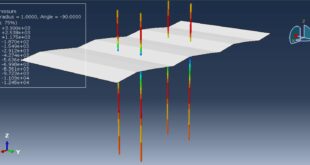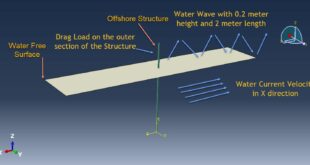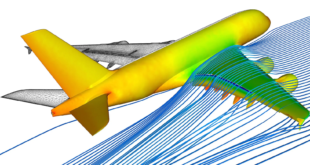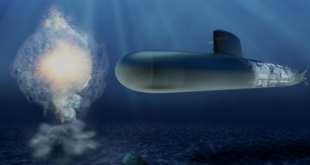In this tutorial Simulation and calculate the long-term load capacity of a pipe pile in Abaqus has been investigated.The pile in this example is cylindrical in shape and loaded in the axial direction only; therefore, the finite element mesh of the pile and the surrounding soil can take advantage of this axisymmetric condition. This simplification cannot be used for piles that are loaded with horizontal loads. Such piles should be treated as three-dimensional objects. It also should be noted that the finite element mesh of a soil–pile system must include interface elements that are capable of simulating the frictional interaction between the pile surface and the soil. It is very difficult, but possible, to simulate the pile–soil interaction during pile driving. Such simulation is not attempted here. Instead, the pile is assumed to be embedded in perfect contact with the soil before applying pile loads. Excess pore water pressures caused by pile driving are assumed to have been dissipated completely before the application of pile loads.You can see a figure of the assembled part at below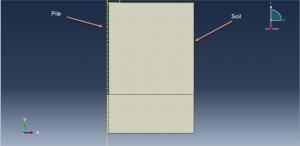
Four-node axisymmetric quadrilateral, bilinear displacement, bilinear pore water pressure elements are used for the clay layer. The elements used for the pile are four-node bilinear axisymmetric quadrilateral reduced-integration elements (with-out pore water pressure). The base of the clay layer is fixed in the horizontal and vertical directions. The vertical boundary on the left side is a symmetry line, and the vertical boundary on the right side is fixed in the horizontal direction but free in the vertical direction. It is noted that the mesh is finer in the vicinity of the pile since that zone is the zone of stress concentration. No mesh convergence studies have been performed. However, the dimensions of the clay layer are chosen in a way that the boundary effect on pile behavior is minimized
In this example the loading rate is too small and pore pressure assume as zero value at the first to the end of analysis, so this analysis will be drained completely by these hypothesis .During the penetration the stress and strain can achievable and the force-displacement diagram . You can see some figures of this simulation at below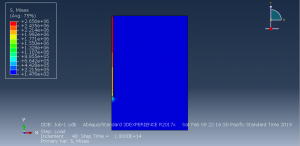
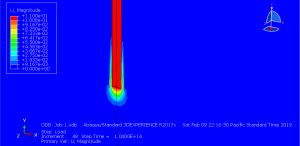
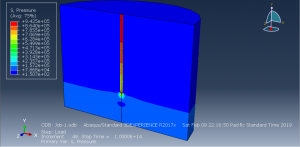
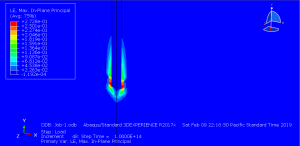
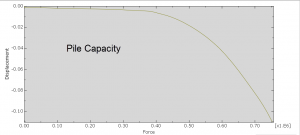
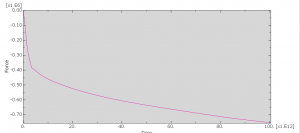
You can provide CAE ,INP,and English video files of this simulation here. The cost of these files is Twenty-Two Euros. you can click on the bellow bottom to beginning process
You can purchase the tutorial through a PayPal account, a Visa, or a Master card, just before payment,send me an email to this address: karampourp@gmail.com
 Abaqus tutorials Abaqus tutorials
Abaqus tutorials Abaqus tutorials
